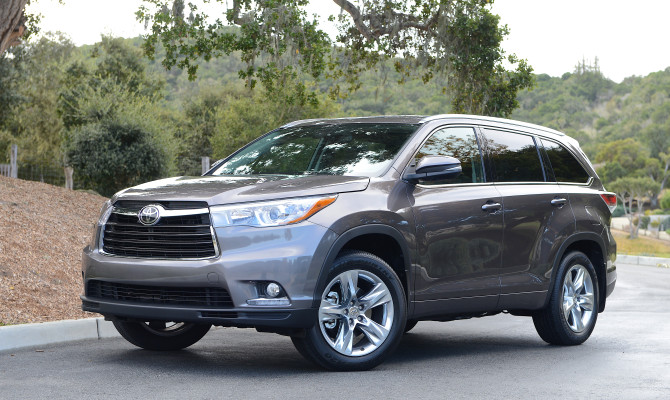
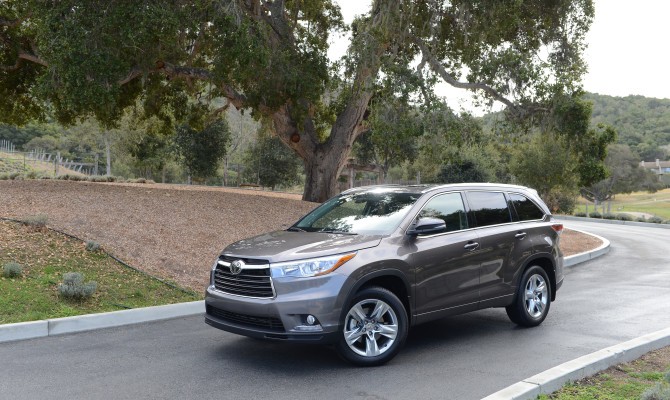
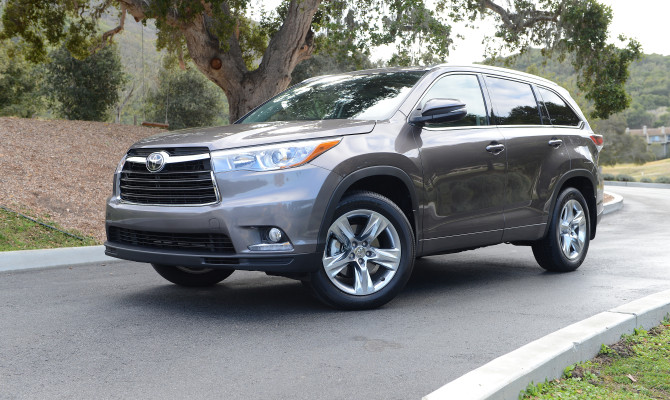
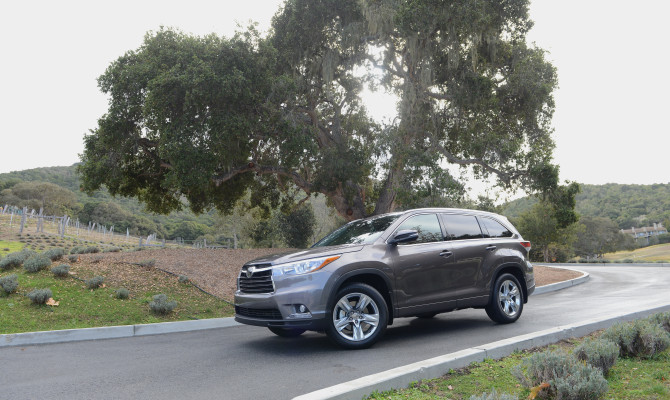
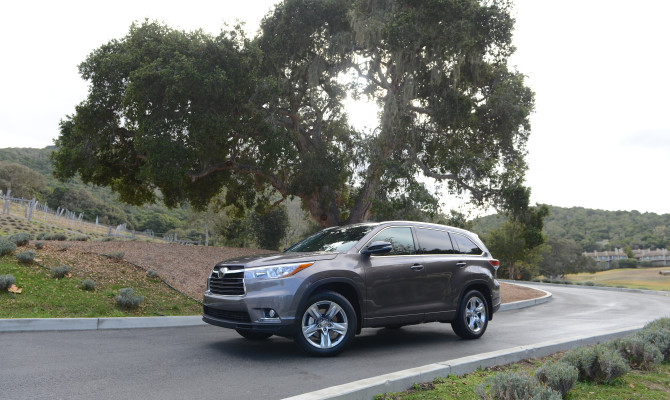
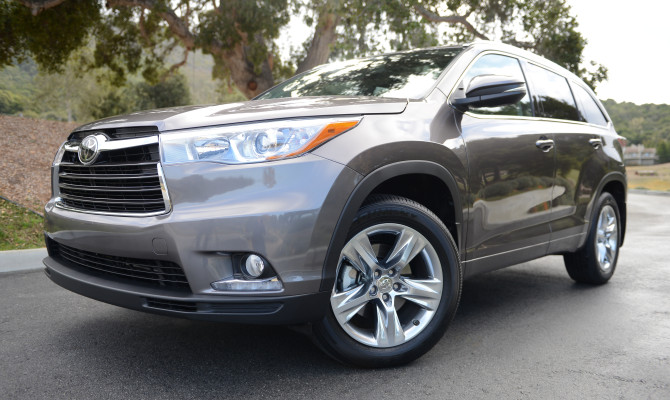
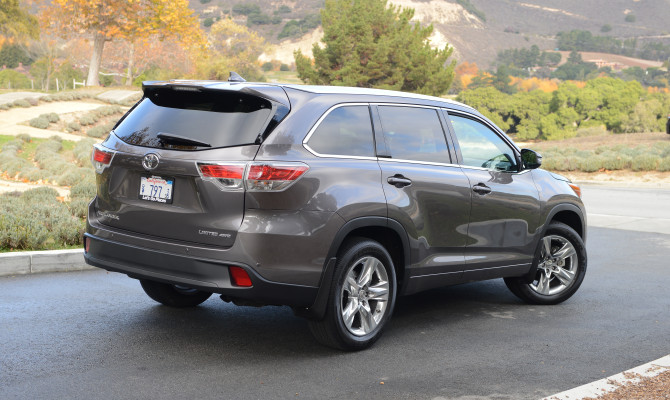
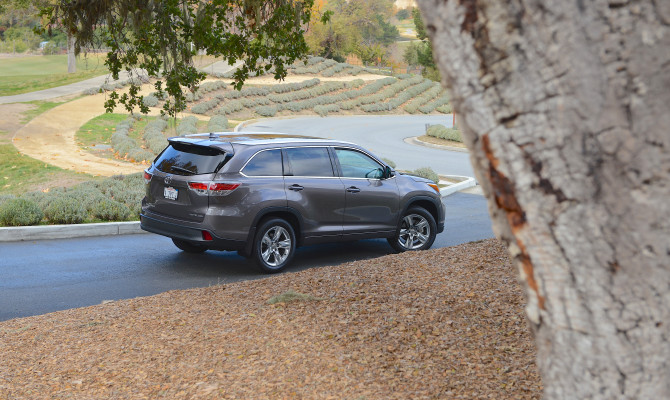
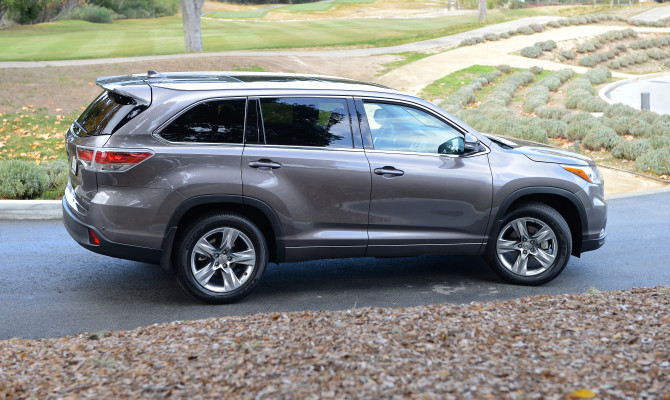
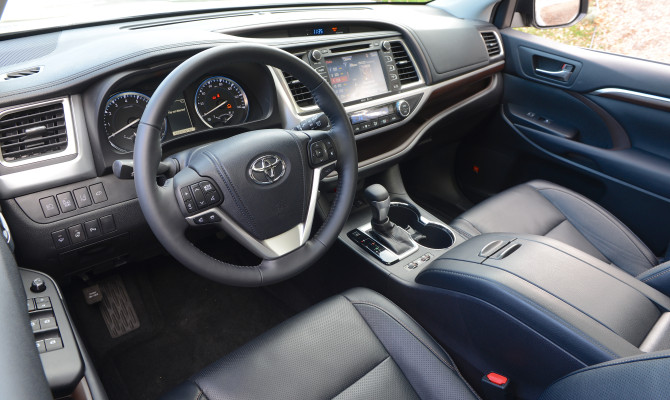
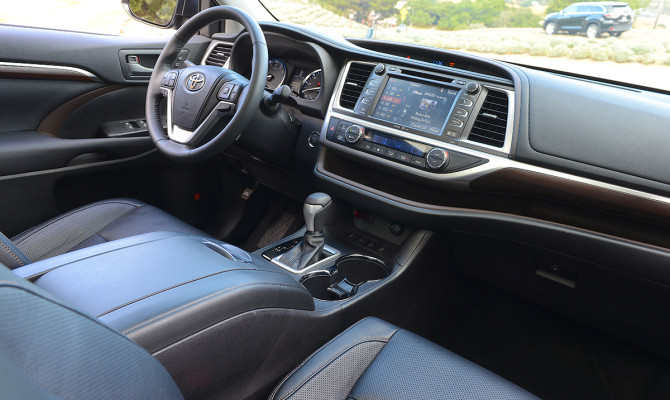
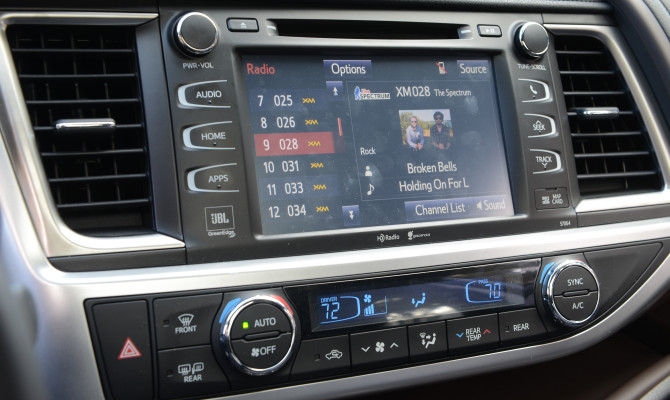
A very good family crossover that will get the job done every day…
From Carmel, California…
The Toyota Highlander is a perfect example of the trend towards crossovers away from traditional SUVs.
Before its 2001 introduction, the Toyota SUV of choice was the 4Runner, built off a pickup truck platform, providing ruggedness and versatility.
What crossovers now accomplish is the same versatility in terms of seating, cargo, and all-wheel drive capability, but they do so with a better on-road drive, thanks to a car-based platform.
The first Highlander was rather small, about the same size as a compact crossover today.
In 2008, its size was adjusted to make room for a standard third row of seats. Now the Highlander has grown again and is packed with more standard equipment and features.
Looks
Toyota has always been a logical purchase, based on reliability and durability but now its designs too are capturing buyers with a visual, desirability esthetic.
The 2014 edition is 7.5cm longer (mostly in the rear seat and cargo area), 1.5 cm wider and 3 cm lower. The stance is wide and lower, making more of a visual impact. Combine this with a large grille borrowed from the Tundra pickup truck and the Highlander has a very rugged, yet polished look that makes it more North American looking.
I believe that this is the best-looking Highlander to date and import buyers will take note and a few domestic intenders should too.
Inside
The dash is much improved with more soft-touch materials and a large 6.1-inch screen in the centre of the dash on the base LE or an 8.0-inch screen on all other models, makes operation easy. One problem is the angle of the screen is hard to see if there is any sunshine, the glare a bit more than I had anticipated. (Back up camera is standard.)
Below the screen and heat controls is a tray-like shelf that runs from the middle to the passenger side of the dash. This is a clever space to place your smartphone but also enable it to be plugged in.
The cup holder and large and the centre armrest has a massive storage area inside; this is thanks to the removal of the stowaway seat that used to hide under the centre armrest. Now in the second row of seats there are three permanent seats or two captain’s chairs in the top Limited model. The previous hideaway idea was simple but not so comfortable. The biggest change takes place in the third row of seats, where three people can sit rather than just two. In addition, there is an extra 100L of cargo space behind the third row of seats offering much better functionality.
It has all the interior amenities that one expects in a modern three-row crossover, even a system that allows the driver’s voice to be amplified through the stereo for easier conversations with passengers in the very back, but there seems to be a lack of sophistication compared to some of the competition.
Drive
The previous Highlander was available with a 4-cylinder engine and front wheel drive (FWD). It’s with a standard 3.5L V6 with 270hp, matched to a 6-speed automatic transmission, also with FWD. The starting price stays at $31,680; factoring in the backup camera there is good value here.
When it arrives later this month, the base LE with all wheel drive (AWD) starts at $34,180. I think most people will opt for the LE with convenience package that includes 8-way power driver’s seat, heated front seats, three-zone climate control, satellite radio and leather steering wheel to name a few. This brings the price up to $34,480 for the FWD and $36,980 for the AWD.
On the road, the AWD system sends power to just the front wheels as often as possible with only 10 per cent of the torque shifting when cornering. The system has the ability to shift or lock up to 50 per cent of the power for better traction but limiting it to times when it is truly needed helps improve fuel economy.
The other part of the fuel economy story is the all-new 6-speed automatic.
The official fuel rating for the most popular AWD model is 11.5L/100km in the city and 8.2L on the highway, which is almost a full litre improvement in combined highway/city economy over the 2013 model. The rear suspension has been modified for a slightly more dynamic drive and improved ride. The steering is rather light and vague but the buyers of this type of product will appreciate the ease of use.
Verdict
The Highlander is a functional vehicle for young buyers with kids and friends that need to get to practice and the carry all the sports equipment that goes with it. Overall, a very good family crossover that will get the job done every day.
Contact: zack [dot] spencer [at] drivewaybc [dot] ca
The Lowdown
Power: 3.5L V5 with 270hp
Fill-up: 11.5L/8.2L/100km (city/highway AWD)
Sticker price: $$31,680-$45,100
Recent Comments
- { Enjoyed your Forest of Bowland in the BMW X5M, particularly the photo of the BMW in front of the main part of Stonyhurst College where... }
- { Bantam designed the Jeep, not Willy's or Ford. The American military gave the original Bantam prototype to Willys and Ford to copy. There is plenty... }
- { All Escalades come with a 6.2-lilter V8 engine that produces 420 horsepower. A six-speed automatic is the only transmission offered and drives the rear wheels.... }
- { Alexandra is an excellent journalist. }
Popular Posts
- Journey to a ‘Sparkling’ Luxury Okanagan Resort “Four lucky readers will put a Dodge Journey’s weekend-...
- The Need For Speed: Hike Those Highway Limits More than half of those polled believe the province sho...
- Drives-U-Crazy… Erratic drivers. An early morning drive from Kelowna to Vancouver is nor...
- Readers Respond: The Pros and Cons of Increasing B.C. Speed Limits Increasing the speed limits will only increase risk to...
- Honda CR-V Review: The Compact Crossover To Get Things Done The CRV is a very stylish and aerodynamic crossover veh...






